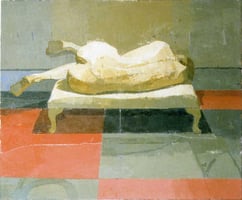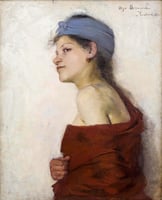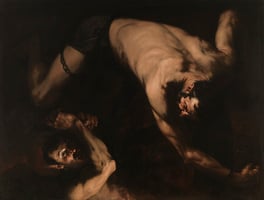Euan Uglow (1932-2000) was an English figurative painter and printmaker, renowned for his precise...
The Influence of El Greco on the Art of the Baroque Period
El Greco (1541-1614) was a prominent painter of the Spanish Renaissance, and a major figure in the history of European art. Born in Crete, he moved to Italy in 1570, where he studied under Titian and other Renaissance masters. After settling in Toledo, Spain, he developed a unique style combining Renaissance, mannerism, and Byzantine elements. His painting often featured elongated figures, flamboyant colors, and a dramatic use of light and shadow. His works, which often depicted religious themes, were highly influential in the development of Spanish art.
El Greco's work was highly sought after by the Spanish nobility, and he received numerous commissions from the Spanish court. He was also popular among the intellectual elite of Spain, and his works were collected by members of the royal family and various religious orders. His work was also admired by foreign dignitaries, including King Philip II and Pope Paul V, who each purchased some of his paintings. His most famous works, "The Burial of Count Orgaz" and "The Assumption of the Virgin," were painted for the Church of Santo Tomé in Toledo.
El Greco's style was controversial during his lifetime, and his works were often met with criticism from academic circles. Despite this, his works continued to gain popularity, and his influence extended to the works of later generations of Spanish painters. His influence can also be seen in the works of Cézanne, Picasso, and other modernist artists who were strongly influenced by his bold use of color and dynamic compositions.
El Greco's legacy continues to be celebrated today, and his works are featured in major art museums around the world. In 1998, the Greek government declared his birthplace of Crete a national monument in his honor. His works are also the subject of numerous books, films, and exhibitions, and his life and works continue to inspire countless artists.




